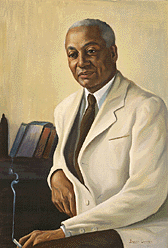Only Water in a Stranger’s Tears
‘It’s only water in a stranger’s tears.’ I start with this line partly because I’ll always get in a musical reference if I can (it’s a lyric from the song Not One of Us, by Peter Gabriel), but also because it sums up to me what defining ‘the other’ (the foreigner) seems to be all about: denying the humanity of a particular group of people. And perhaps nothing defines our humanity as much as our tears, whether from grief, distress, fear, or even happiness. We shed tears when emotion, that quintessentially human experience, overwhelms us. We cry with sympathy, too, and not just for people we know.
You’d be forgiven for thinking it really is only water in the tears of asylum seekers. In the case of Australia, much of the recent political rhetoric and media coverage of the issue asylum seekers have been reduced to ‘human cargo’, as one recent TV news story described them – or rather, less-than-human cargo, because it’s often difficult to find any humanising elements in political and media commentary.
In a time when multiculturalism in Australia is simply a fact of life, and politically off-limits as a target of xenophobia (immigrants vote, after all), asylum seekers seem to have become the safe proxy for ‘the other’. In the media, in politics, and in the public sphere generally, asylum seekers have become the object of open fear and loathing.
They’re an easy target, let’s face it. For one thing, they have no right of reply. Asylum seekers are kept in detention centres that are off-limits to the public, while journalists, where they’re interested, are denied access. Refugee advocacy groups rarely get mainstream media coverage. The Australian Greens, who can usually be counted on to stress the humanitarian considerations of Australia’s policy on asylum seekers, are lucky to get a sound bite in a news story by the time the major parties are covered.
Another reason why asylum seekers are such tempting targets is that, however you settle on the semantics – even leaving aside the more obviously pejorative terms such as ‘illegals’ and ‘queue jumpers’ – they will always be ‘unauthorised’ (or ‘irregular’, in Prime Minister Julia Gillard’s word), and therefore somehow suspect. It doesn’t seem to matter that the vast majority of asylum seekers are eventually assessed as genuine refugees, a category which, paradoxically, Australians overwhelmingly support. In the public and political spheres, asylum seekers are like prisoners, in that they’re considered fair game. They broke the ‘rules’ and therefore deserve no sympathy. They are easy and reliable scapegoats.
In looking at the quality of media coverage of any issue, the tabloids usually establish the low watermark, and so it has been for asylum seekers.
In March, Brisbane’s Sunday Mail ran a front page headline THEY’RE HERE, for a story which ran in several other News Ltd. papers (here). Was the story about cane toads? Terrorists? Perhaps poltergeists? (If you know the film, you’ll remember the line).
No, the story was about asylum seekers, now on Australian soil because Christmas Island was overflowing. Two photographs illustrated who ‘they’ were. One was a generic shot of an overloaded boat carrying asylum seekers; the other, a woman wearing a headscarf, pushing a shopping trolley, with her two daughters beside her. The ‘suspected immigration detainees’ were caught by the photographer on ‘a shopping excursion’ which, as Piers Ackerman later spelled out for those who missed the implication, was ‘courtesy of the Australian taxpayer’.
As an example of how the media contributes to the concept of ‘foreignness’, or the ‘other’, the story was chilling. The most benign, banal image imaginable, a women shopping for groceries with her two daughters, was intended to strike fear and loathing into our hearts. Why are we supposed to feel this way? Because this woman – this ‘foreign’ woman – sought asylum in Australia, out of her own fears for her family’s safety. This qualifies her as one of ‘them’, not one of ‘us’. Our common humanity is denied.
Instead of trying to engender sympathy, the newspaper does the opposite; it appeals to our worst instincts. We are encouraged not just to shun the stranger, figuratively knocking on the door for help, but even to be afraid of her (‘they’re here’). We are also encouraged to resent her – for buying food for her children.
By extension, we are supposed to feel these things about her children, too.

The story is a particularly dire example of the tenor of the current public discussion of asylum seekers, but it’s hardly alone. A more recent tabloid headline for a story about an expected increase in boat arrivals was simply, INVASION. But on this, the characterisation of asylum seekers as ‘invaders’, with all that implies, politicians are buying in.
Opposition Leader Tony Abbott’s ‘real action’ video released a few weeks before the election was called could not have made a more obvious reference to World War II-era fears of the ‘yellow peril’. The red arrows sweeping down on Australia from the North unmistakably represent invading hordes. It’s us versus them (again). In Australian folk memory, the implication is clear: asylum seekers are analogous to the Japanese army sweeping down through Asia in 1942.
It’s bad enough, here, that all sense of proportion is obliterated, where the relatively tiny numbers of asylum seekers (only 0.6 per cent of the world’s asylum seekers arrive in Australia, where they make up less than two per cent of the annual migration intake) have become an overwhelming invading force. Worse, I think, is that in this video, people seeking asylum from persecution and conflict – desperate people who have given up everything, even their home country – are portrayed as a threat to Australia, one of the most stable and affluent countries in the world. To an asylum seeker it must look like a cruel joke.
And again, the humanity of asylum seekers – our common humanity – is denied.
In fact, when Tony Abbott talks about asylum seekers, he doesn’t even talk about people. He refers only to ‘boats’. ‘We’ll stop the boats’ was his election catchphrase. From a communications point of view, when you’re tapping into community fears that are out of all proportion to the reality, the phrase is perfect. It’s punchy, it sounds decisive, and it ignores the people in the boats, neatly sidestepping any tricky humanitarian issues. The policy ostensibly becomes not about refusing asylum to people whose desperation few Australians would have experienced, but about directing a troublesome mode of transport. It’s akin to putting a stop sign at an intersection.
Except that, of course, Abbott is talking about people. People like you and me. In the middle of this kind of political discourse, perhaps it’s not surprising that the media can blithely refer to asylum seekers as ‘human cargo’. They’re analogous to fish. (It’s the boats we’re dealing with here.)
Julia Gillard’s position in the election campaign was little different, even if it was couched in different language to appeal to Labor’s constituency. Her big policy announcement on asylum askers was a plan, however premature, for the offshore processing of asylum seekers in East Timor. Tony Abbott wants to “stop the boats”; Gillard was about “stopping people getting in boats”. The message was essentially the same, regardless of the rationale: asylum seekers are not welcome in Australia.
The other significant message in the speech, picked up by the media as it was intended, was that Gillard, and therefore Labor, believed in “respecting the anxieties that are held by many in our community”. Those “anxieties” were left deliberately vague, apart from this line: “a desire for a clear and firm policy to deal with a very difficult problem does not make you a racist”. Not a few, I suspect, immediately recalled former Prime Minister John Howard’s call for an end to political correctness, paving the way for Independent Pauline Hanson to make xenophobia a political cause. It’s one thing to acknowledge community fear and resentment of asylum seekers; it’s quite another to pander to it.
The concept of ‘foreignness’, then, has made a big comeback in Australia. In one of the most ethnically and racially diverse nations in the world, a combination of fear-mongering politics and sensationalist media coverage has conspired to whip up fear of a few thousand asylum seekers. It is perhaps small wonder that we saw such a raw reaction of fear, anger and racism in Woodside, in the Adelaide Hills, at the prospect of women and children asylum seekers being housed nearby. Part of the reaction was about lack of consultation, to be sure; but some of the footage of the public meeting on the issue shown on television was unmistakably about what happens when people are defined as ‘the other’. As less human. Julia Gillard was right about one thing: ‘[surely] we are better than this’.




